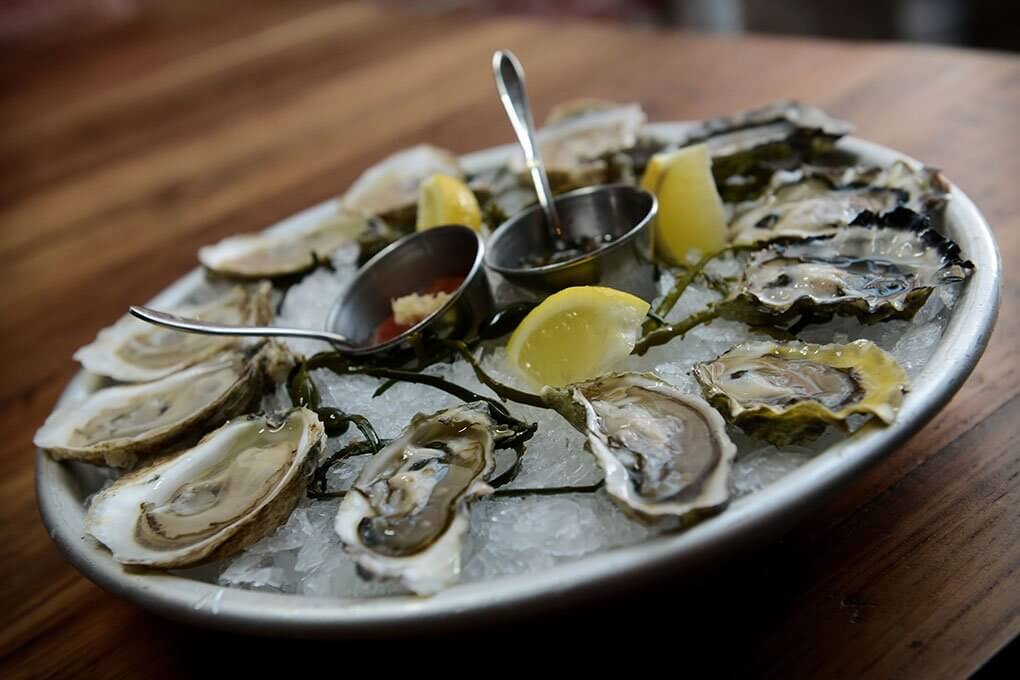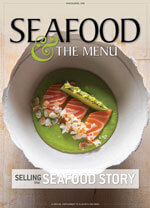 JESUS MARTINEZ
JESUS MARTINEZ Abigail Carroll
Abigail Carroll
Abigail Carroll refers to herself “the accidental oyster lady.” She calls Maine home but was educated in both France and New York. Carroll, just a decade ago, was living a glamorous life as a day trader in Paris. But when her personal life got messy, her professional life got even messier, she admits in the opening pages of her memoir in progress.
Carroll found herself back in Maine with a nascent oyster farm on her hands. “What does an ivy-educated, 1%-er who dislikes oysters and gets seasick do with an oyster farm? This one took her father’s advice: I bought a pair of waders and cowboy’ed up. Then I held on for dear life.”
Her oyster farm gets its name from the estuary of the Nonesuch River in which it is sited within the borders of a nature preserve just south of Portland. She’s done more than hold on for dear life in that her 3-inch cocktail oysters have won awards for their balance of brine and sweetness and their elegant shape. Carroll’s signature Nonesuch Emeralds are finished, free range, on the bottom of the riverbed where they develop great shell consistency and a hearty rich meat with distinctive brown edges.
Her Abigail Pearls are raised in gear floating off the bottom, an adjustment that produces a smooth, delicate meat and snowy white shells. Taste-wise they offer a similar estuarial mix of salt and sweetness but with more pronounced brine and distinct notes of sea-grass.
The Emeralds and the Pearls are both Eastern Oysters. Carroll also offers Belons, or European flats, considered one of the world’s most desirable oysters because of its bold brininess and hazelnut finish, to the lucky participants of her daily oyster tours who come to the farm for closer look at how the accidental oyster lady operates.
David Siegal, Chef, Cull & Pistol, New York
Chef David Siegal of Cull & Pistol has never used a Nonesuch oyster in a cooked application and has no plans to do so because he believes that they are one of the most beautifully balanced oysters when it comes to its inherent flavor that to mask it with anything more than a simple mignonette or drop of lemon juice would be criminal. “For me, the Nonesuch checks all the boxes, and is “pound-for-pound” one of the finest in the land,” said Siegal. “It may sound boring, but oftentimes, the ingredient that makes any dish great, is the one you intentionally leave out, says Siegal.
He serves Nonesuch oysters as a counterpoint to the bigger, meaty, brine bombs that come from the Damariscotta River, which runs to the north of the Scarborough estuary where Carroll farms her oysters. For the record, Siegal considers the Damariscotta to be the epicenter of his oyster wheelhouse. “But I have guests try both to see how oysters that are geographically close, but from different bodies of water can differ,” says Siegal.
He describes the Nonesuch as being a little more elegant and well-rounded when compared to other Maine oysters and the emerald green shell indicative of Carroll’s effort to bottom finish her oyster makes them stand out on Cull & Pistol’s raw bar display.











